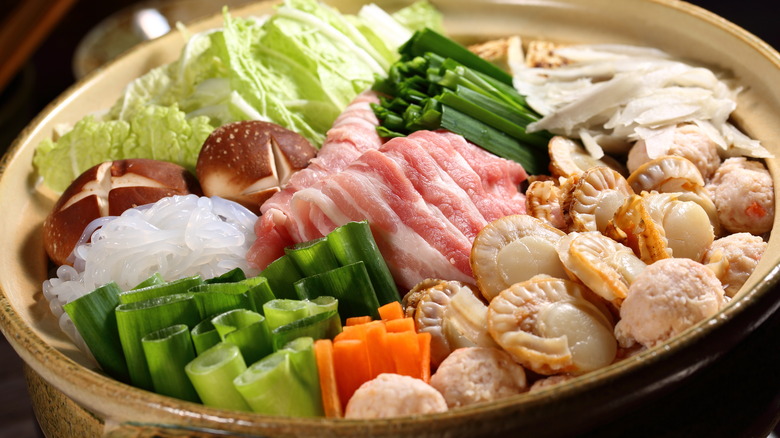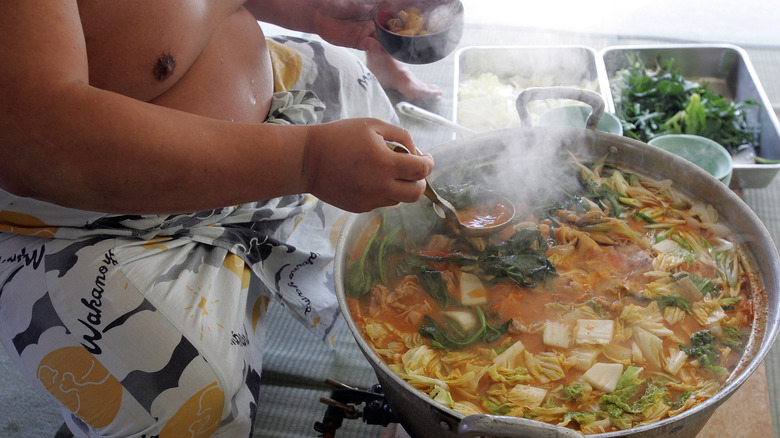Eat Like A Sumo Wrestler: Chanko Nabe Is The Soup Of Champions
Athletes performing in demanding sporting events need quality sources of fuel that can keep them sustained and strong. Such is the relationship between the nutrition-laden Chanko Nabe, also known as sumo stew, and sumo wrestlers preparing for competitions. This steaming Japanese recipe is filled with meat and vegetables and can help sumo wrestlers, also called rikishi, pack on pounds before wrestling tournaments and challenging bouts. Since size is an advantage in sumo tournaments, it isn't uncommon for these wrestlers to put down 10 bowls of this satisfying soup in a single day.
The name Chanko is thought to have evolved from the combination of an endearing term for a wrestling coach and the name used for a student. When made in bulk, this hearty meal can be shared among hungry coaches and athletes alike. Even if you're not preparing for serious competition, however, the comforting recipe still holds appeal and can be adapted to suit your lifestyle and dietary preferences, regardless of whether you're heading home from the office or planning to run a few miles this weekend.
Serving ultimate bowls of comfort
While there isn't a set recipe to make Chanko Nabe, it is common to find a variety of protein sources like seafood or meats and an assortment of vegetables simmering in flavorful broth. With such a versatile recipe format, you can create the perfect dish to match your palate. Though chickens were traditionally used to make Chanko Nabe (the meat was thought to be good luck since chickens are two-legged animals), you can adapt your home recipes using any protein source. Cubes of tofu, wild mushrooms, and other meat alternative ingredients can all be used instead of animal products.
The soup broth can be flavored with miso, dashi, salt, soy sauce, or kimchi. Toasted sesame seeds can add a subtle nutty crunch, while grated ginger can bring warming flavors to your bowl. Choose your favorite comfort ingredients like udon noodles or rice to add to your steaming pots of soup. Though you may not want to eat this several times each day, the dish makes for a comforting meal, particularly during colder months, and if you have many mouths to feed, this soup is certainly a winning move.

